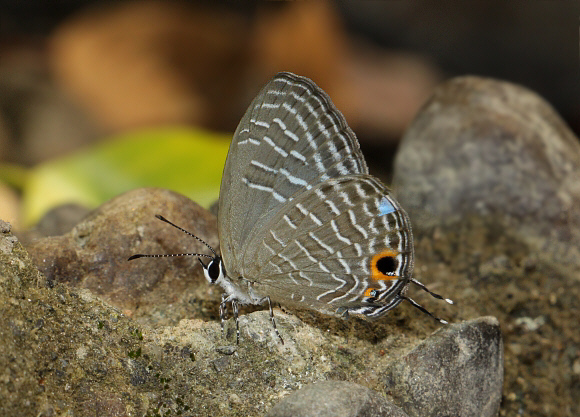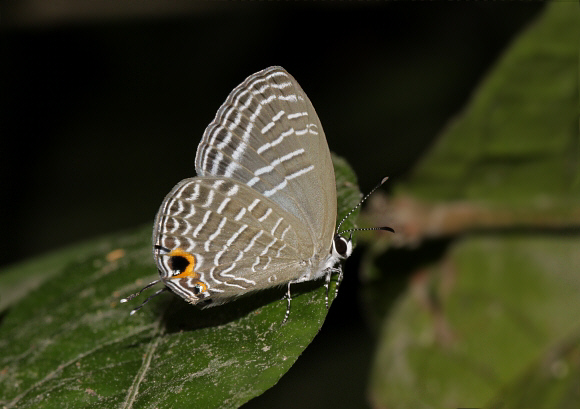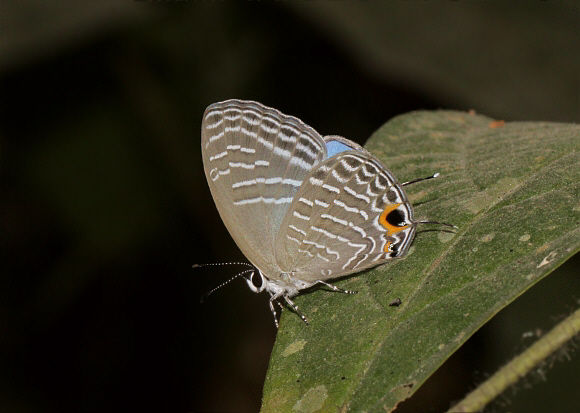
Introduction
Members of the tribe Polyommatini are characterised by being small in size, and marked on the underside with a pattern of small spots or striations. The uppersides of males are in most species covered in metallic blue scales, while females are predominantly dull earthy brown in colouration.
The tribe has worldwide distribution and contains such familiar species as the Pea Blue Lampides boeticus, Chalkhill Blue Polyommatus coridon, African Tiger Blues Tarucus spp; and Oriental genera including Castalius, Zizeeria, Nacaduba and Jamides.
The genus Jamides contains about 30 species, all of which have undersides patterned with white or buff striations on a greyish-brown ground colour. All the species also bear an orange-edged black spot at the tornus, and a single thin tail. Males have bluish uppersides, which vary from pale azure blue in alecto to vivid ultramarine or turquoise in various other species. Females are similar to the males, but the apex and outer margins of their forewings are dark brown or black in most species.
Jamides alecto is a common and very widespread species, occurring in Sri Lanka, India, Myanmar, Thailand, Malaysia, Taiwan, the Philippines, Sumatra, Borneo, Sulawesi and Java.

Habitats
This species breeds in disturbed evergreen and deciduous forest habitats at altitudes between sea level and about 1000m.
Lifecycle
The larvae feed on the foliage of various plants including Hevia ( Euphorbiaceae ), Boesenbergia, Kaempferia, Zingiber, Hedychium, Alpinia, Elettaria ( Zingiberaceae ), and Puereria ( Fabaceae ). They are attended by ants of several genera including Pheidole, Crematogaster, Tetramorium, Rhoptromyrmex, Myrmicaria, Tapinoma, Technomyrmex and Anoplolepis.
Adult behaviour
Both sexes are commonly seen flying around flowering bushes in forest clearings and forest-edge habitats. They often rest on foliage at a height of about 1 metre on bushes in dappled sunlight.
Males are frequently seen imbibing mineralised moisture from damp soil and leaf-litter on the forest floor. When feeding the head is usually dipped. The pattern of white striations diverts the eyes of avian predators away from the real head, and towards the orange-rimmed black ocellus and ‘false-antennae’ tails. Attacking birds aim their beaks towards the area in which they predict a butterfly will try to make it’s escape, i.e. in front of the head. The markings on the wings trick them into aiming just behind the butterfly instead, allowing it to makes it’s escape in the opposite direction.

